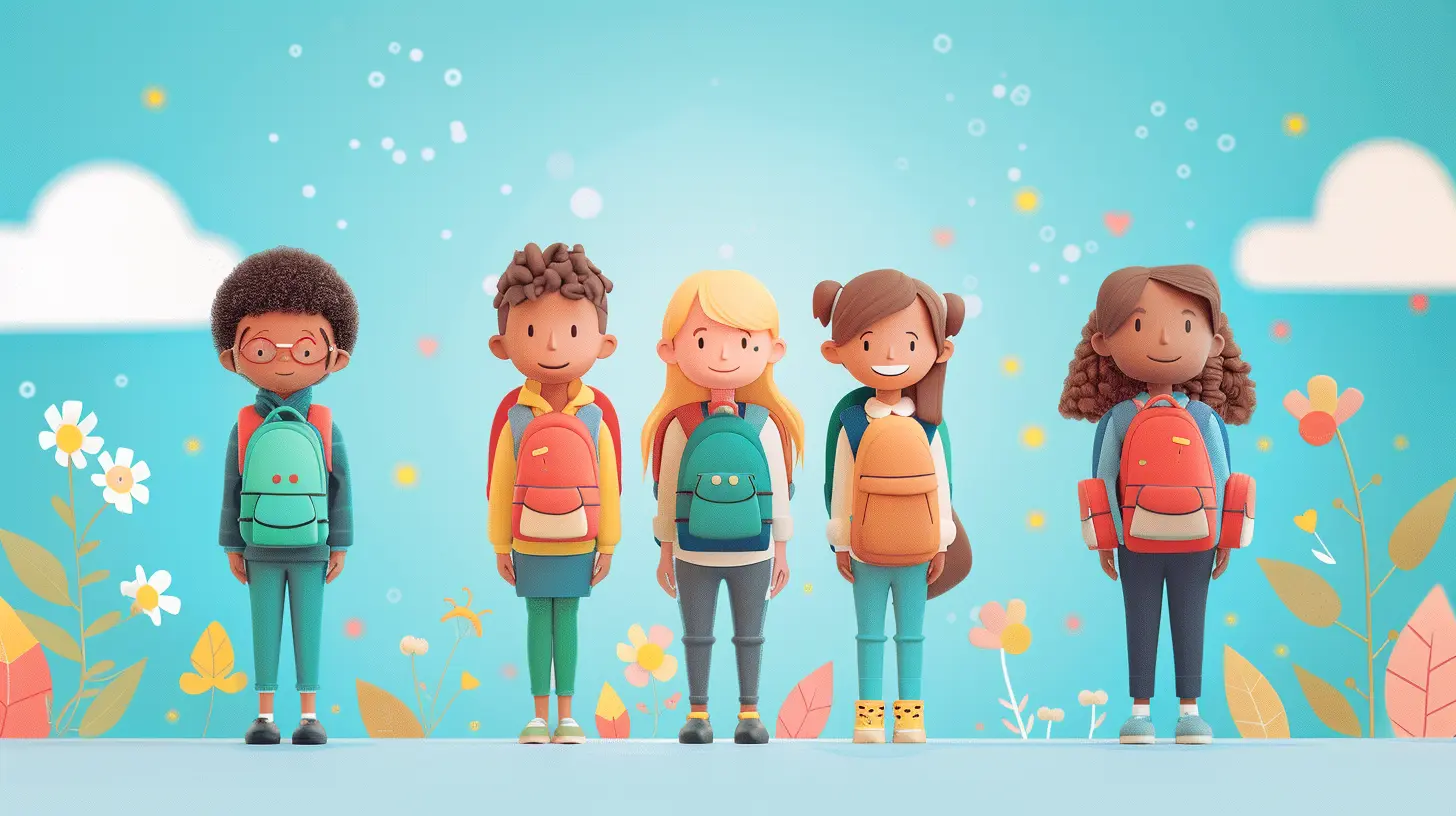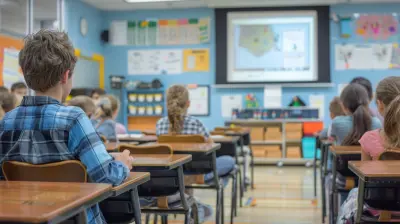The Importance of Emotional Safety in Learning Environments
14 August 2025
Ever tried to learn something new when you’re feeling anxious, judged, or misunderstood? It’s tough, right? That’s because emotional safety isn’t just a “nice-to-have” in education—it’s the foundation of real learning. Let's get personal here. Whether you're a student, a parent, a teacher, or just someone who values education, understanding emotional safety can completely shift how you view learning spaces.
In this article, we're diving into what emotional safety actually means, why it holds so much power in classrooms, and how we can create spaces where students feel safe, heard, and ready to thrive.
What Is Emotional Safety Anyway?
Let’s break it down. Emotional safety in learning environments means that students feel secure, respected, and free to express themselves without the fear of humiliation or ridicule. It's the kind of environment where making mistakes is viewed as part of the learning process—not something to be ashamed of.Think of it like this: emotional safety is the solid ground beneath a student’s feet. Without it, they're standing on shaky ground, constantly watching their step. With it, they’re free to explore, make leaps, and even fall—and get back up—with confidence.
Why Emotional Safety Matters More Than We Think
You might be thinking, “Isn’t a strict classroom good for discipline?” Well, discipline doesn’t have to come at the cost of emotional well-being. In fact, when students feel emotionally safe, they’re more likely to behave constructively—and learn better, too.Here’s why emotional safety is a game-changer:
1. It Boosts Confidence and Risk-Taking
Ever notice how some students stay quiet even when they know the right answer? That’s usually fear talking—fear of being wrong, laughed at, or called out. Emotional safety wipes that fear away. When students feel safe, they’re willing to raise their hands, share ideas, and try new things, even if they might fail. That’s where real learning begins.2. It Opens the Door to Collaboration
Group activities can be chaotic when kids don’t feel safe. But in a safe environment? Magic happens. Students feel more comfortable expressing themselves, listening to others, and tackling problems together. Emotional safety builds trust, and trust fuels teamwork.3. It Lowers Stress and Anxiety
Let’s face it—school is stressful. But when students constantly feel judged or unworthy, that stress multiplies. High stress levels are proven to hurt memory, focus, and creativity. Emotional safety helps calm those nerves, so students can actually absorb information and stay engaged.4. It Encourages Authenticity
Students are not robots—they're human beings with feelings, quirks, and big questions. In emotionally safe environments, students don’t feel the need to put on a mask. They’re allowed to be themselves, which leads to deeper, more meaningful learning experiences.
The Science Behind Emotional Safety
This isn’t just warm and fuzzy talk—there’s real science backing it up.Research in neuroscience shows that when people feel threatened—emotionally or physically—their brain goes into "survival mode." That means the prefrontal cortex (where reasoning and decision-making happen) shuts down, and the amygdala (which processes fear) takes over.
In survival mode, learning becomes nearly impossible. Emotional safety keeps the brain in a state where it’s open to learning, growth, and connection.
Real-Life Classroom Scenarios
Let’s look at two scenarios:Scenario 1: Unsafe Learning Environment
A student answers a question wrong. The teacher chuckles and says, “Come on, that’s obvious. Who else can get it right?” The rest of the class laughs. That student probably won’t raise their hand again anytime soon. They’ll retreat, disengage, and start believing that their voice doesn’t matter.Scenario 2: Emotionally Safe Learning Environment
Same question, same wrong answer. But this time, the teacher says, “Interesting thought! Can you explain your reasoning?” Then adds, “Mistakes help us find new ways of thinking. Let’s explore this together.” That student just gained a little more courage, and so did anyone else listening.See the difference? One response crushes curiosity. The other fuels it.
Emotional Safety Starts With Adults
Teachers, parents, administrators—you’re the frontline. Emotional safety doesn’t just pop up on its own. It’s created, day by day, through relationships, communication, and consistent actions.1. Build Trust First
Before you dive into algebra or essay writing, take the time to know your students. Ask about their interests. Say hi with a smile. Trust is built in small moments. The more students trust you, the more they’ll trust the learning process itself.2. Model Vulnerability
Let’s normalize not knowing everything. When teachers admit, “I’m not sure, let me look that up,” they're showing students that learning never stops. Vulnerability isn’t weakness; it’s a path to connection.3. Encourage Questions—Even “Weird” Ones
Every question is an opportunity. Even if it seems off-topic or out-there, validate the curiosity behind it. This shows that no thought is too small or strange to be heard.4. Address Bullying Swiftly and Kindly
Nothing destroys emotional safety faster than bullying—especially when it’s ignored. Create a culture of kindness, awareness, and accountability. Students should know that their dignity will always be protected.Creating Emotionally Safe Classrooms: Practical Tips
Ready to build a secure, nurturing space? Here’s a toolkit to get you started.1. Set Clear, Respectful Rules
Create classroom norms with your students—not for them. When students help shape the rules, they feel ownership and are more likely to follow them. Keep the rules focused on respect, listening, and empathy.2. Use Positive Reinforcement
Instead of pointing out what students are doing wrong all the time, catch them doing something right. Praise effort, not just results. This boosts morale and keeps motivation high.3. Share Feelings Openly
Implement regular check-ins. Something as simple as “How are you feeling today?” can open up vital conversations. Use tools like mood meters or emotion wheels for younger students.4. Foster Reflection
Encourage journaling, group discussions, or quiet thinking time. Reflection helps students connect emotionally with what they’re learning—and with themselves.5. Create Safe Physical Spaces, Too
Think cozy corners, soft lighting, flexible seating. The way a room feels can influence how emotionally safe it is. Make sure the classroom doesn't just look inviting—make it feel like a sanctuary.Digital Learning and Emotional Safety: A New Frontier
In online learning spaces, emotional safety is just as important—and arguably harder to maintain. Without face-to-face cues, students can feel isolated or invisible.To counter that:
- Use video calls with cameras on (if possible) for personal connection.
- Encourage collaborative projects and breakout rooms.
- Be extra intentional with tone in written communication.
- Check in regularly—don’t let students drift away unnoticed.
The Long-Term Impact of Emotional Safety
Here’s the kicker: emotional safety doesn’t just help students today. It shapes how they approach learning, relationships, and challenges for the rest of their lives.A student who grows up in emotionally safe learning environments learns to trust themselves. They become more resilient. More empathetic. More driven. And that’s not just good for school—that’s good for society.
How Parents Can Support Emotional Safety at Home
The school environment is crucial, but home plays a huge role too. Here’s how parents can help build emotional safety:- Be present: Listen without jumping to fix. Sometimes kids just need to vent.
- Celebrate effort: Not every test has to come with a reward or punishment. Praise the hard work.
- Model emotional honesty: Talk about your own feelings and how you handle them.
- Respect autonomy: Let kids have a say in decisions. It builds trust and confidence.
Work together with educators. Be a team. When schools and homes align in fostering emotional safety, students get the best of both worlds.
Final Thoughts: Let’s Rethink What Learning Really Means
At the end of the day, learning isn’t just about grades, standardized tests, or memorizing facts. It’s about growth. And growth can’t happen in fear. Emotional safety is the fuel that keeps a student’s curiosity burning, their confidence blooming, and their potential rising.So let’s stop treating emotional safety like a bonus. It’s not a “soft skill” or a trendy buzzword. It’s the bedrock of every thriving learning environment.
If we want students to truly shine—not just survive school, but enjoy it, be challenged by it, and take pride in their progress—then emotional safety needs a front-row seat in every classroom, every curriculum, and every conversation.
all images in this post were generated using AI tools
Category:
Educational PsychologyAuthor:

Eva Barker
Discussion
rate this article
1 comments
Fennec Curry
Emotional safety is vital for growth! It fosters creativity, confidence, and a love for learning. Great insights!
September 1, 2025 at 3:20 AM

Eva Barker
Thank you! I’m glad you found the insights valuable. Emotional safety truly does play a crucial role in fostering a positive learning experience.


